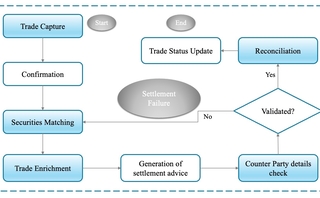Spreadsheet interoperability: Or how companies learned to stop worrying and love Excel
While Microsoft engages in a tech arms race for chatbot and cloud supremacy, interop firms are attempting to remedy some of the idiosyncrasies of its monolithic spreadsheet software.

It takes awhile for the title of Stanley Kubrick’s 1964 black comedy, “Dr. Strangelove or: How I Learned to Stop Worrying and Love the Bomb,” to make sense. Throughout the Cold War-era satire, the constant threat of a hydrogen bomb-inspired nuclear war drives the plot along until the characters are no longer planning to prevent the bombs from dropping but instead are making new plans and nuclear war looks certain. The inevitability of a situation means that instead of finding alternatives, people should adapt and prepare for the new reality.
To Dan Schleifer, CEO and co-founder of interoperability platform provider Finsemble, this is analogous to the issues financial services and interoperability firms face with Microsoft Excel.
Interoperability gives firms the freedom of choice to choose best-of-breed third-party applications and build their own, knowing that they will communicate with each other seamlessly
Reena Raichura
“Have you ever watched ‘Dr. Strangelove’? There’s this kind of inevitability that Excel is going to be around, so how do you make it less painful for your users to connect what they built on Excel?” Schleifer says.
Traders, sales associates, and portfolio managers use Microsoft Excel. They’re passionate about it. The ubiquity of Microsoft’s spreadsheet software is such that its use is essential in the financial sector. While power users also regularly utilize other applications such as trading platforms, communication tools, or reconciliation systems on the same desktop, there is no guarantee that these apps can seamlessly communicate with Excel, let alone with each other.
Nick Kolba, founder of cloud-based interop company Connectifi, explains why.
“Applications can’t talk to each other for a variety of reasons. One is that there was initially no standard language for them to talk in. That’s basically what we’re solving for: giving everybody a common language specification they can write to, and then if you put those applications together, they can have a conversation, even though they haven’t necessarily worked out an agreement ahead of time,” Kolba says.
The challenge of getting sometimes non-compliant applications to talk to each other has been helped by the introduction and increasing popularity of FDC3, an open standard under the guidance of the Fintech Open Source Foundation (Finos). Prior to founding Connectifi, Kolba worked at OpenFin, where he led the creation of FDC3, and also served as chair of the standard’s working group between 2017 and 2021.
“Before FDC3, if you wanted to have apps interoperate, the developer of that app would have to call up the developer of another app and they’d have to agree to some APIs. They’d make some one-off APIs and use those and it was obviously not scalable. You could end up with a lot of brittleness, potentially, as those things shifted,” Kolba says.
Excel is really pushing a lot of its boundaries. Its flexibility, cheapness, and speed to deployment have made it a really good way of being able to compensate for maybe things that you shouldn’t be compensating for
James Maxfield
Improved communication between desktop apps and Excel increases workflow, reduces risk, and reduces time delays in managing data. Conversely, poor communication can create breaks in workflow, increase risks, and reduce overall productivity. This is where interoperability firms come in, to provide solutions and improve workflow speed.
A bridge too far
Released in 1987, Excel’s usage remains widespread and its software is updated frequently—enough so that it does not fall into the “legacy tech” category. However, there are concerns within the capital markets sector that Excel, while useful for most routine activities, is being applied to problems it is not optimized to solve.
James Maxfield, head of product and solutions at Duco, a no-code data reconciliation company, says Microsoft Excel’s easy-to-use software has encouraged users to believe it is capable of processing far more complex problems than it is able to process.
“Excel is really pushing a lot of its boundaries,” he says. “Its flexibility, cheapness, and speed to deployment have made it a really good way of being able to compensate for maybe things that you shouldn’t be compensating for.”
It was, after all, an error in Microsoft Excel that helped lead to a $6.2 billion loss for JP Morgan in the “London Whale” case.
Maxfield says he’s come across many organizations that have built “quite complicated controls and reconciliation tools” in Excel. This means they could have macros embedded in them; they could have very complex data calculations that are quick to run, but not robust; and in some instances, Excel serves as the backbone for running critical controls.
“They’ve become a victim of their own success,” Maxfield says.
Microsoft Excel’s wide-ranging appeal is primarily due to its general-purpose accessibility and flexibility, but this has had the knock-on effect of the software taking on a “jack-of-all-trades, master of none” label.
In practice, this means that financial services employees are treating Microsoft Excel as an infallible tool that can be applied to any complex process within the organization, no matter how well-suited it is for that process. This often results in opaque and arcane spreadsheets, which are almost impossible to decipher by anyone other than its designer. This is not a problem for a one-person company, but in an organization made up of hundreds—if not thousands—of employees, it presents considerable risk.
“Excel is just the dominant thing that you can’t get rid of, and it’s being used for everything from sell-side research models to poor man’s portfolio management on the buy side,” says Finsemble’s Schleifer. “You end up in a situation where each portfolio manager inside a hedge fund has their own Excel models that are super detailed, super confusing and completely built in different ways. There’s no consistency. There’s no taking over somebody else’s Excel model. And then it’s not scalable.”
All quiet on the Microsoft front
Nevertheless, for all its quirks, it looks unlikely that Microsoft will be amending the software or making substantial interoperability improvements any time soon. While the company’s partnership with the London Stock Exchange looked like it could herald potential changes in the capital markets space, Microsoft has bigger fish to fry.
Developments in ChatGPT and Microsoft Azure mean that innovation in Excel within the capital markets sector is looking unlikely in the near future, Kolba says.
“I don’t know if interoperability is really on the radar at this point. In capital markets, we tend to think we’re the center of the universe, but in the tech world, we’re a rounding error,” Kolba says. “There will be people in capital markets who probably still want to have some sort of solution to this, but the staff at Microsoft are 100% focused on cloud and AI.”
Maxfield also believes any requested changes are unlikely to demand Microsoft’s immediate attention.
“Most companies are not looking to develop a specific product for the capital markets. There will be a limit to what they would want to add into their products and the features that are there. I don’t think it’s necessarily a product gap for Microsoft,” he says.
With new improvements unlikely in the near future, interoperability firms are needed even more to improve workflow in ways that Microsoft is currently unable to do. The number of collaboration tools in the industry is nearing an inflection point, and the variety of interoperability companies is continuing to increase.
Reena Raichura, head of product solutions at interoperability company Glue42, says increasing interoperability allows greater freedom for participating companies.
“Interoperability gives firms the freedom of choice to choose best-of-breed third-party applications and build their own, knowing that they will communicate with each other seamlessly. This is what our end-clients want,” she says.
In July 2019, WatersTechnology predicted that the interoperability sector would become one of the bigger Wall Street tech battlegrounds over the next decade. Just four years later, it’s clear that the winners will be those that are better than their competitors at interoprating with Excel. They will benefit from Excel’s dominance now and in the future.
Finsemble’s Schleifer agrees.
“Our whole premise is how to connect your brand new stuff to your old stuff, because it’s not going away anytime soon. I think this trend of interoperability is a reflection of that and that Excel is one of those things that is never going away, for better or for worse. You can love it or hate it, it doesn’t matter; it’s not going anywhere,” he says.
Only users who have a paid subscription or are part of a corporate subscription are able to print or copy content.
To access these options, along with all other subscription benefits, please contact info@waterstechnology.com or view our subscription options here: http://subscriptions.waterstechnology.com/subscribe
You are currently unable to print this content. Please contact info@waterstechnology.com to find out more.
You are currently unable to copy this content. Please contact info@waterstechnology.com to find out more.
Copyright Infopro Digital Limited. All rights reserved.
You may share this content using our article tools. Printing this content is for the sole use of the Authorised User (named subscriber), as outlined in our terms and conditions - https://www.infopro-insight.com/terms-conditions/insight-subscriptions/
If you would like to purchase additional rights please email info@waterstechnology.com
Copyright Infopro Digital Limited. All rights reserved.
You may share this content using our article tools. Copying this content is for the sole use of the Authorised User (named subscriber), as outlined in our terms and conditions - https://www.infopro-insight.com/terms-conditions/insight-subscriptions/
If you would like to purchase additional rights please email info@waterstechnology.com
More on Trading Tech
For MarketAxess, portfolio trading buoys flat revenue in Q3
The vendor is betting on new platforms like X-Pro and Adaptive Auto-X, which helped forge a record quarter for platform usage.
Quants look to language models to predict market impact
Oxford-Man Institute says LLM-type engine that ‘reads’ order-book messages could help improve execution
JP Morgan pulls plug on deep learning model for FX algos
The bank has turned to less complex models that are easier to explain to clients.
Nasdaq says SaaS business now makes up 37% of revenues
The exchange operator’s Q3 earnings bring the Adenza and Verafin acquisitions center stage.
Harnessing generative AI to address security settlement challenges
A new paper from IBM researchers explores settlement challenges and looks at how generative AI can, among other things, identify the underlying cause of an issue and rectify the errors.
The causal AI wave could be the next to hit
As LLMs and generative AI grab headlines, another AI subset is gaining ground—and it might solve what generative AI can’t.
Waters Wrap: Operational efficiency and managed services—a stronger connection
As cloud, AI, open-source, APIs and other technologies evolve, Anthony says the choice to buy or build is rapidly evolving for chief operating officers, too.
BlackRock forecasts return to fixed income amid efforts to electronify market
The world's largest asset manager expects bond markets to make headway once rates settle.








